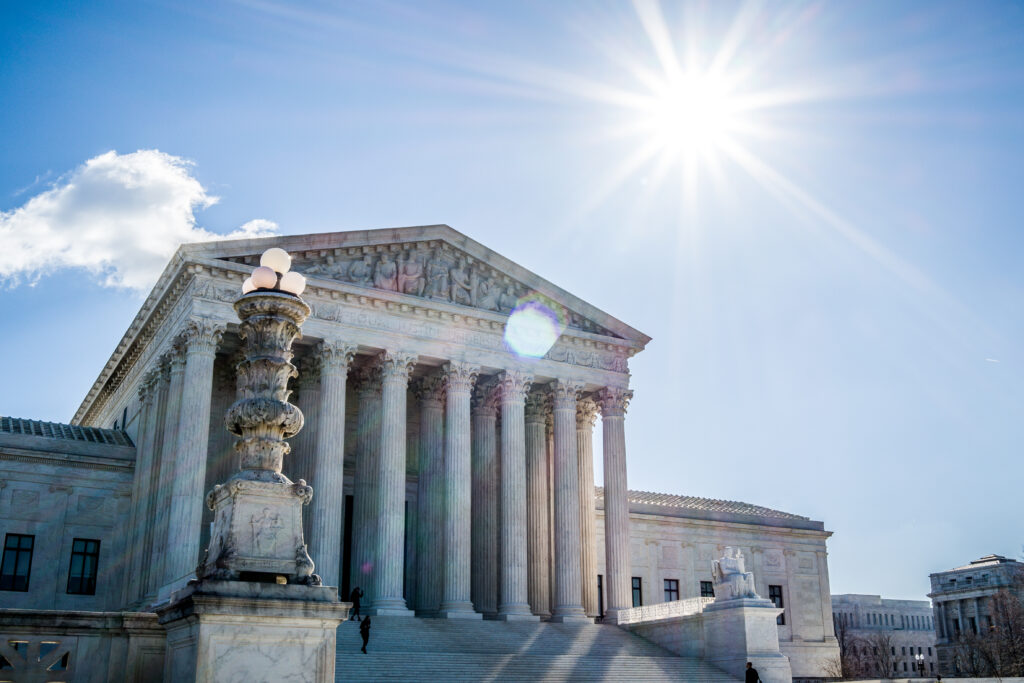In Glacier Northwest v. International Brotherhood of Teamsters, the U.S. Supreme Court recently ruled 8-1 that striking workers are not protected when they intentionally make inventory that they intend to ruin by walking off the job. According to the company’s allegations, the union called for a work stoppage when they knew that Glacier Northwest was in the process of mixing and delivering concrete. Sixteen truck drivers refused to complete their deliveries, with some even abandoning their trucks, threatening significant damage to the equipment if the concrete hardened inside. Non-union employees had to scramble to dispose of it before it hardened and damaged the trucks. Although the trucks were saved, the concrete was ultimately lost.
Glacier sued the union in state court for damages caused by the spoiled concrete resulting from the strike. The Washington Supreme Court had dismissed the case, finding that state tort law was not applicable to a labor dispute covered by the National Labor Relations Act of 1935 (NLRA).
At the U.S. Supreme Court, the Teamsters argued that the drivers’ actions were protected under the federal NLRA. Previous cases had established that a union has a legal right to strike even if it risks the destruction of perishable goods, under the legal doctrine known as “Garmon preemption.” For example, the National Labor Relations Board (NLRB) had ruled in favor of milk truck drivers who struck, risking the spoilage of milk, and a federal appeals court reached a similar conclusion regarding striking cheese workers.
However, the U.S. Supreme Court majority rejected this argument, contending that Garmon preemption does not shield striking workers when they fail to take “reasonable precautions” to safeguard their employer’s property from foreseeable, aggravated and imminent danger. Justice Amy Coney Barrett, writing for the majority, highlighted a crucial distinction between this case and the cheese and milk situations:
“Given the lifespan of wet concrete, Glacier could not batch it until a truck was ready to take it. By reporting for duty and pretending as if they would deliver the concrete, the drivers prompted the creation of the perishable product. Then, they waited to walk off the job until the concrete was mixed and poured in the trucks. In so doing, they not only destroyed the concrete but also put Glacier’s trucks in harm’s way.” (Italics added.)
Justice Coney Barrett’s majority opinion, joined by Chief Justice John Roberts and Justices Sonia Sotomayor, Elena Kagan and Brett Kavanaugh, determined the Teamsters indeed failed to take “reasonable precautions” to protect Glacier’s property from foreseeable damage during the strike.
Justice Samuel Alito, joined by Justices Clarence Thomas and Neil Gorsuch, agreed with the result but not the reasoning of the majority. Alito would have allowed Glacier’s lawsuit to proceed based on a finding of intentional damage to the concrete. Justice Thomas, in a separate opinion joined by Gorsuch, urged the court to reconsider the doctrine of Garmon preemption in a future case. The case was remanded to the state court for further proceedings.
Justice Ketanji Brown Jackson, the sole dissenter in the case, argued that the NLRB’s general counsel found merit in the argument that the strike was protected. In her view, the courts should pause their review and allow the NLRB to assess the dispute first.
The implications of the decision are not yet set in stone. The state court could wait for the NLRB to act and stay Glacier’s lawsuit. Alternatively, the lawsuit could proceed, leading to potentially inconsistent decisions from the NLRB and the court. It is also uncertain whether the decision will have a significant impact on other labor strikes. However, based on the Glacier Northwest case and other recent decisions, it appears that from management’s perspective, that the current Supreme Court will continue to apply balance and common sense in labor law disputes that come before the court.




